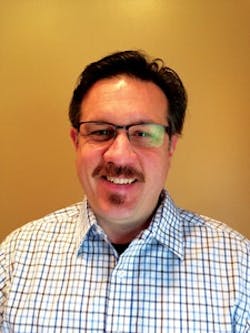Dark Days in the Sunshine State
A recent report prepared by the Geoplan Center at the University of Florida—“Water 2070: Mapping Florida’s Future – Alternative Patterns of Water Use in 2070”—explores how Florida’s growing population will impact water demand, and the outlook is not especially optimistic. W&WD Assistant Editor Lauren Baltas spoke to Pall Corp.’s regional sales manager for Florida, David Glovinsky, to discuss what Florida’s future holds and how the state is prepared to face it.
Lauren Baltas: How would you describe the state of Florida’s water industry?
David Glovinsky: Florida is in a state of flux, no pun intended. (Flux is a word that’s used in the membrane market to describe throughput or production across the membrane.) But in this context, I think it’s clear that they have some big challenges ahead of them. It’s going to be difficult for them to really decide which way they’re going to need to go.
This study looks at one approach; I believe that there are multiple approaches that they can tackle. But I think it’s going to spur a lot of debate on both sides, both economically, as well as environmentally, on how they proceed.
Baltas: What approaches do you suggest the state pursue?
Glovinsky: The plan in the study that they feel will make the most impact is water conservation policy—a widespread water conservation policy mainly focusing on point sources and usage and irrigation, as well as consumption through these high-population areas. I firmly believe that it’s going to be a two-prong approach. If they are going to rely specifically on incoming rainfall as their main source of water for demand, conservation is only going to get them so far. If they go through a stretch of time when they might have drought conditions, population increases, or some other potential situation unforeseen that may arise, this could leave them short. So even though I’m all for alternative water supply and looking at all the different options and looking at them both on the benefits and weaknesses, I don’t think it’s a one-size-fits-all approach. I think it’s going to have to be conservation, as well as looking at an alternative water supply and methods of treatment to reach their goals.
Baltas: What tools does Florida have at its disposal to meet the challenges?
Glovinsky: Florida is the state that has a purple pipe campaign. They take ... treated effluent and they use that specifically for irrigation purposes. So in areas where there’s high population—obviously central Florida has a huge tourism area; I’m sure we’ve all been to see Mickey at one point or another—if you look beyond the surface, you’ll see purple pipes running everywhere for irrigation. I don’t believe that they’ve done that full-scale for the entire state. I think that they need to implement that plan as wide scale as they possibly can. I don’t believe that they have exhausted all potential possibilities for other avenues of reuse or reclamation.
I think at some point in the not-so-distant future, Florida is going to have to strongly consider looking at higher levels of water reuse, water reclamation, potentially even indirect and direct potable reuse of wastewaters for drinking applications, and the big one, which I know that Florida has an issue with, is desalination. They have a very large desalination plant in Tampa Bay currently. I believe that they have the tools available to them; it’s just a matter of reaching them.
Baltas: How did the study impact your perception of the industry?
Glovinsky: I would say it basically validated some of the things that I have either experienced or impressions that I’ve had over the years. It provided me with some real target areas, and we’ll say maybe even consumer groups and people that we would need to speak to with regard to increasing education, as well as discussion of treatment options long-term to help them meet their goals.
Fleeting Possibilities
As Florida gears up for future population growth and the resulting water demand, past decisions become glaringly present.
A few years ago, Pall Corp. participated in a pilot study project that would have resulted in a large water reclamation facility in Florida. The facility would treat wastewater and re-inject it into the aquifer, which “would then provide a better source of freshwater into the aquifer, take some lines off rainwater, as well as some of the surface water sources that they have, and really provide a buffer in capacity,” Glovinksi said.
But due to a lack of funding, the project was never executed.
Now, as Florida deliberates the state its dwindling water supply, industry professionals like Glovinski consider what impacts such projects could have offered.
“That’s why I say it’s going to be a combined approach between conservation and alternative treatment to really meet their demands to guarantee sufficient water,” Glovinski said.
David Glovinsky is eastern regional sales manager for Pall Process Systems. Glovinksy has 15 years of experience in the water treatment and engineered systems industry. Prior to his sales role, Glovinksy was involved in field service activities, including pilot plants for municipal and industrial water and wastewater treatment. Glovinksy can be reached at [email protected] or 607.758.1774.
